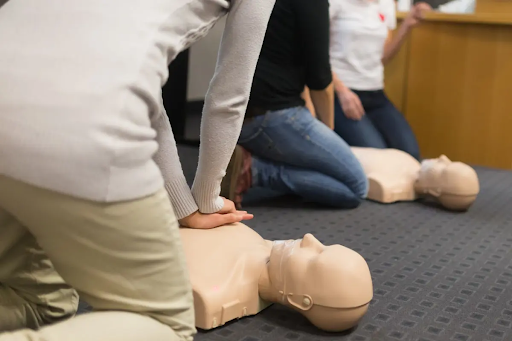In the ever-evolving landscape of healthcare, the importance of basic life support (BLS) training cannot be overstated. A BLS training provider plays a critical role in ensuring that healthcare professionals, emergency responders, and even laypersons are equipped with the necessary skills and knowledge to respond effectively to cardiac emergencies. This article delves into the essential functions and responsibilities of BLS training providers in healthcare settings.
The Importance of BLS Training
Basic Life Support is a vital skill set that includes the recognition of cardiac arrest, effective chest compressions, and the use of an automated external defibrillator (AED). BLS training is essential for a variety of professionals, including nurses, doctors, paramedics, and even staff in non-medical settings such as schools and corporate offices.
According to the American Heart Association (AHA), effective BLS can double or triple a victim’s chances of survival from cardiac arrest. Given these statistics, the demand for qualified BLS training providers has surged. These providers offer structured training programs that not only impart life-saving skills but also instill confidence in individuals who may find themselves in emergency situations.
Qualifications of a BLS Training Provider
A reputable BLS Training Provider typically holds certifications from recognized organizations, such as the AHA or the Red Cross. These certifications ensure that the provider is qualified to teach BLS techniques and that the training adheres to the latest guidelines and protocols.
In addition to formal certifications, BLS training providers should have extensive experience in emergency response, allowing them to offer real-world insights that enhance the learning experience. Effective instructors are not just knowledgeable; they also possess strong communication skills, enabling them to engage participants and tailor the training to diverse learning styles.
Curriculum and Training Delivery
A comprehensive BLS training program encompasses several critical components, including:
- Recognition of Cardiac Arrest: Participants learn to identify signs of cardiac arrest and the importance of acting swiftly.
- High-Quality Chest Compressions: Instruction includes techniques for delivering effective chest compressions, including depth, rate, and hand placement.
- Ventilation Techniques: Training covers both mouth-to-mouth resuscitation and the use of bag-valve masks.
- Use of AEDs: Participants are trained in the operation of AEDs, including how to attach the device and follow voice prompts.
BLS training providers typically employ various teaching methods to cater to different learning preferences. These methods may include hands-on practice, scenario-based simulations, and visual aids. This varied approach not only enhances retention but also helps trainees gain practical experience in applying BLS techniques.
Continuing Education and Recertification
Given the dynamic nature of healthcare practices, BLS training providers emphasize the importance of ongoing education. Most certifying organizations recommend recertification every two years to ensure that healthcare providers remain current with the latest BLS guidelines and techniques.
BLS training providers often offer refresher courses that help individuals update their skills and knowledge without the need to retake the full certification course. These refresher courses are particularly beneficial for those who have been in roles where they do not frequently engage in BLS practices.
The Impact on Patient Outcomes
The primary goal of BLS training is to enhance patient outcomes in emergencies. By equipping healthcare providers and laypersons with the skills to act decisively in cardiac arrest situations, BLS training providers contribute significantly to the reduction of mortality rates associated with sudden cardiac events.
Studies have shown that communities with high rates of BLS training have better survival outcomes following cardiac arrest. This is largely due to the quick response time of bystanders who have been trained in BLS techniques. The impact extends beyond the individual patient to encompass the entire healthcare system, as early intervention can reduce the burden on emergency services and hospitals.
Collaboration with Healthcare Organizations
BLS training providers often collaborate with hospitals, clinics, and corporate wellness programs to deliver tailored training solutions. This collaboration ensures that the training meets the specific needs of different healthcare environments.
For instance, a hospital may require advanced training for its staff that includes pediatric BLS, while a corporate office might focus on training non-medical employees to respond effectively in workplace emergencies. These partnerships also facilitate the integration of BLS training into ongoing staff development and compliance programs.
Conclusion
The role of a BLS training provider in healthcare is multifaceted and crucial for saving lives. By offering high-quality training, promoting continuous education, and collaborating with healthcare organizations, BLS training providers ensure that individuals are prepared to respond effectively in emergency situations.
In a world where every second counts, the contributions of BLS training providers are indispensable in fostering a culture of preparedness and responsiveness, ultimately enhancing the overall safety and well-being of communities. Through their commitment to excellence, BLS training providers play a vital role in shaping a healthcare landscape that prioritizes timely and effective emergency response.

